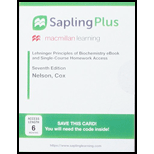
Concept explainers
(a)
To determine: The size of a typical eukaryotic cell with cellular diameter of
Introduction:
The eukaryotic cells are more complex than the prokaryotic cells and they vary based on the structure and functions. The eukaryotes have been evolved from the unicellular organisms in the timeline of evolution.
(a)
Explanation of Solution
The diameter (
The size of a typical eukaryotic cell with cellular diameter of
(b)
To determine: The number of molecules of actin in a myocyte of diameter
Introduction:
The eukaryotes have been evolved from the unicellular organisms in the timeline of evolution. The second phase of evolution has been started when the levels of multicellularity diversify the organisms into algal species,
(b)
Explanation of Solution
The diameter (
The diameter (
The volume of the given myocyte is as follows:
The volume of the given actin is as follows:
The number of actin molecules in the given myocyte is as follows:
The number of molecules of actin in a myocyte (if the diameter of actin molecules is
(c)
To determine: The number of molecules of mitochondria in a liver cell of diameter
Introduction:
The eukaryotic cells are more complex than the prokaryotic cells and they vary based on structure and functions. The eukaryotes have been evolved from the unicellular organisms in the timeline of evolution. Mitochondrion is part of a eukaryotic cells and the energy storage of any cell.
(c)
Explanation of Solution
The diameter (
The diameter (
The volume of the given liver is as follows:
The volume of the given mitochondria is as follows:
The number of mitochondria molecules in the given myocyte is as follows:
The number of mitochondria in a liver cell (if the diameter of action molecules is
(d)
To determine: The number of molecules of glucose be present in spherical eukaryotic cell if the cellular concentration is
Introduction:
Glucose is known as a simple sugar molecule which possess a molecular formula
(d)
Explanation of Solution
The volume of the given eukaryotic cell is
One cubic centimeter is equal to one millimeter. Therefore, the volume is
The number of molecules in one liter of
The total number of glucose in given cell is as follows:
The number of molecules of glucose be present in spherical eukaryotic cell if the cellular concentration is
(e)
To determine: The number of glucose molecules in hexokinase molecule if the hexokinase concentration is
Introduction:
Glucose is known as a simple sugar molecule which possess a molecular formula
(e)
Explanation of Solution
The concentration of hexokinase molecule is
One molecule of hexokinase will have
The number of glucose molecules in hexokinase molecule (if the hexokinase concentration is
Want to see more full solutions like this?
Chapter 1 Solutions
SaplingPlus for Lehninger Principles of Biochemistry (Six-Month Access)
- 9. Which one of the compounds below is a major final product of the reaction sequence shown at the right? A) para-bromonitrobenzene C) meta-bromoaniline B) meta-bromonitrobenzene D) para-bromoaniline 1. HNO3, H2SO4 2. Br₂, FeBr3 3. H₂/Ni (3 atm) E) ortho-bromoanilinearrow_forward10. This reaction sequence includes an intramolecular Friedel-Crafts reaction. Which of the compounds below is expected to be the major product? PhCH2CH2CH2COOH 4-phenylbutanoic acid SOCI₂ AICI 3 A B C D Earrow_forward5. Which one is the major organic product obtained from the following reaction sequence? A B C OH i 1. NaBH4 CI 2. H₂O, H+ AICI 3 D OH Earrow_forward
- 1. Which one is the major organic product obtained from the reaction of toluene and cyclopentanol in the presence of H3PO4, as shown here? CH3 CH3 CH3 CH3 CH3 H3PO4 A B с D E OHarrow_forwardAscorbic acid is a diprotic, with ionizations of: pKa1 = 4.10; pKa2 =11.80. You need to make 350 mL of an ascorbate buffer that is pH 5.05, andyou have 1.5 mM stock solutions of :ascorbic acidmonosodium ascorbatedipotassium ascorbateHow much 1.5 mM monosodium ascorbate do you use to make yoursolution? Answer in mL and report your value to three signicant gures.Please type only the number.arrow_forward1. What is the abbreviated form of the name for the molecule below. Punctuate it correctly ( image attached) 2. How much ATP is formed by the complete oxidation of lignocerate? Show stepsarrow_forward
- fill in the blank and circle the active site for each molecule. urgent!arrow_forwardfill in the table and circle the active sitearrow_forwardThe two half reactions for beginning and end of the electron transport chain are given below in standard form. Calculate & for the overall process. Using the Nernst equation (AG° = -n Fo, F= 96.485 kJ/volt mol), calculate AG°. Explain the need for a stepwise process in the electron transport chain. NAD* + H+ + 2 e- = NADH ½ 0г + 2H+ + 2е- = H20 = -0.32v E = +0.82Varrow_forward
- answer the questions and the example steps should be from carbohydrates glycolysis and citric acid cycle. Please put down reactions and structuresarrow_forwardidentify the general type of reaction catalyzed and an example step from glycolisis structure for each of the following enzymes/ co factor Kinase, isomerase, mutase, dehydrogenase, NAD+ , FADarrow_forwardfill in the blanks with the missing structures and give namesarrow_forward
 BiochemistryBiochemistryISBN:9781319114671Author:Lubert Stryer, Jeremy M. Berg, John L. Tymoczko, Gregory J. Gatto Jr.Publisher:W. H. Freeman
BiochemistryBiochemistryISBN:9781319114671Author:Lubert Stryer, Jeremy M. Berg, John L. Tymoczko, Gregory J. Gatto Jr.Publisher:W. H. Freeman Lehninger Principles of BiochemistryBiochemistryISBN:9781464126116Author:David L. Nelson, Michael M. CoxPublisher:W. H. Freeman
Lehninger Principles of BiochemistryBiochemistryISBN:9781464126116Author:David L. Nelson, Michael M. CoxPublisher:W. H. Freeman Fundamentals of Biochemistry: Life at the Molecul...BiochemistryISBN:9781118918401Author:Donald Voet, Judith G. Voet, Charlotte W. PrattPublisher:WILEY
Fundamentals of Biochemistry: Life at the Molecul...BiochemistryISBN:9781118918401Author:Donald Voet, Judith G. Voet, Charlotte W. PrattPublisher:WILEY BiochemistryBiochemistryISBN:9781305961135Author:Mary K. Campbell, Shawn O. Farrell, Owen M. McDougalPublisher:Cengage Learning
BiochemistryBiochemistryISBN:9781305961135Author:Mary K. Campbell, Shawn O. Farrell, Owen M. McDougalPublisher:Cengage Learning BiochemistryBiochemistryISBN:9781305577206Author:Reginald H. Garrett, Charles M. GrishamPublisher:Cengage Learning
BiochemistryBiochemistryISBN:9781305577206Author:Reginald H. Garrett, Charles M. GrishamPublisher:Cengage Learning Fundamentals of General, Organic, and Biological ...BiochemistryISBN:9780134015187Author:John E. McMurry, David S. Ballantine, Carl A. Hoeger, Virginia E. PetersonPublisher:PEARSON
Fundamentals of General, Organic, and Biological ...BiochemistryISBN:9780134015187Author:John E. McMurry, David S. Ballantine, Carl A. Hoeger, Virginia E. PetersonPublisher:PEARSON





